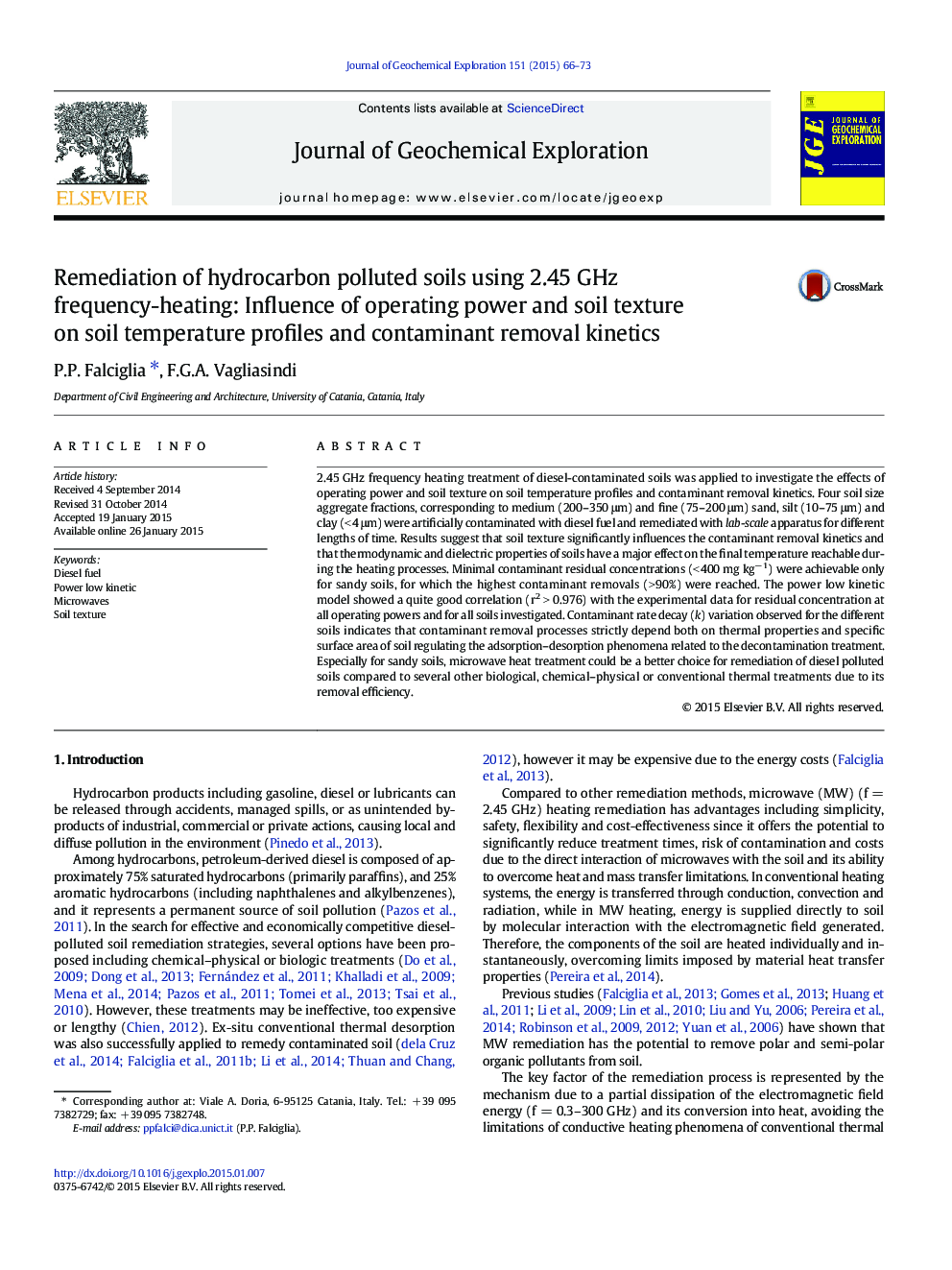| کد مقاله | کد نشریه | سال انتشار | مقاله انگلیسی | نسخه تمام متن |
|---|---|---|---|---|
| 4457170 | 1620908 | 2015 | 8 صفحه PDF | دانلود رایگان |
• We investigate microwave heating remediation of diesel polluted soils.
• We assess the influence of soil texture and operating parameters on removal kinetics.
• The power low kinetic model fits well the observed residual concentration.
• Soil texture highly influences soil temperature profiles and contaminant removal.
• Microwave treatment is very effective in decontaminating soils with different textures.
2.45 GHz frequency heating treatment of diesel-contaminated soils was applied to investigate the effects of operating power and soil texture on soil temperature profiles and contaminant removal kinetics. Four soil size aggregate fractions, corresponding to medium (200–350 μm) and fine (75–200 μm) sand, silt (10–75 μm) and clay (< 4 μm) were artificially contaminated with diesel fuel and remediated with lab-scale apparatus for different lengths of time. Results suggest that soil texture significantly influences the contaminant removal kinetics and that thermodynamic and dielectric properties of soils have a major effect on the final temperature reachable during the heating processes. Minimal contaminant residual concentrations (< 400 mg kg− 1) were achievable only for sandy soils, for which the highest contaminant removals (> 90%) were reached. The power low kinetic model showed a quite good correlation (r2 > 0.976) with the experimental data for residual concentration at all operating powers and for all soils investigated. Contaminant rate decay (k) variation observed for the different soils indicates that contaminant removal processes strictly depend both on thermal properties and specific surface area of soil regulating the adsorption–desorption phenomena related to the decontamination treatment. Especially for sandy soils, microwave heat treatment could be a better choice for remediation of diesel polluted soils compared to several other biological, chemical–physical or conventional thermal treatments due to its removal efficiency.
Journal: Journal of Geochemical Exploration - Volume 151, April 2015, Pages 66–73
